Every day, South Africa’s roads tell a story, but not all have happy endings.
With lives lost and communities impacted, the narrative of road safety is a pressing national concern. Dive into an eye-opening exploration of South Africa’s road safety – the hidden dangers, the human stories, and the path to safer travels.
Introduction
Every year, the roads of South Africa tell a story, one that weaves through bustling cities and stretches across vast landscapes.
But within this narrative lies a more pressing tale – the story of road accidents, a topic that has far-reaching implications for every South African.
This article seeks to unfold the layers of this critical issue, offering insights into its significance and exploring its multifaceted impact on our nation.
South Africa, renowned for its diverse cultures and stunning sceneries, unfortunately also grapples with a significant challenge: road safety.
In the intricate web of daily commutes and long-distance travels, accidents on South African roads have become a concerning reality.
These incidents are not just statistics.

They represent lives, families, and communities impacted every day.
Understanding the extent, causes, and effects of road accidents in South Africa is crucial for every citizen, policymaker, and visitor.
As we navigate through the details of this pressing issue, we embark on a journey to uncover the latest trends, explore the underlying causes, and examine the wide-ranging consequences.
Our aim is not only to inform but to engage and provoke thought, fostering a deeper understanding of a subject that touches us all.
Whether you are a daily commuter, a weekend road-tripper, or someone interested in the broader societal issues of our time, this article promises to provide a comprehensive and insightful exploration into the realm of road safety in South Africa.
Statistical Overview of Road Accidents in South Africa
Navigating the bustling roads of South Africa, one encounters a tapestry of diverse landscapes and cultures.
However, this vibrancy is shadowed by a pressing concern: road accidents.
It’s a topic that touches many, whether directly or indirectly, making it not just a statistic but a matter of personal and national importance.
The Numbers Speak: A Yearly Breakdown
Let’s delve into the most recent data, illuminating the reality of road safety in South Africa. The vehicle population is currently approximately nearly 13 million, and growing. This rise in vehicles navigating the roads brings to light the ever-increasing complexity of road safety management.
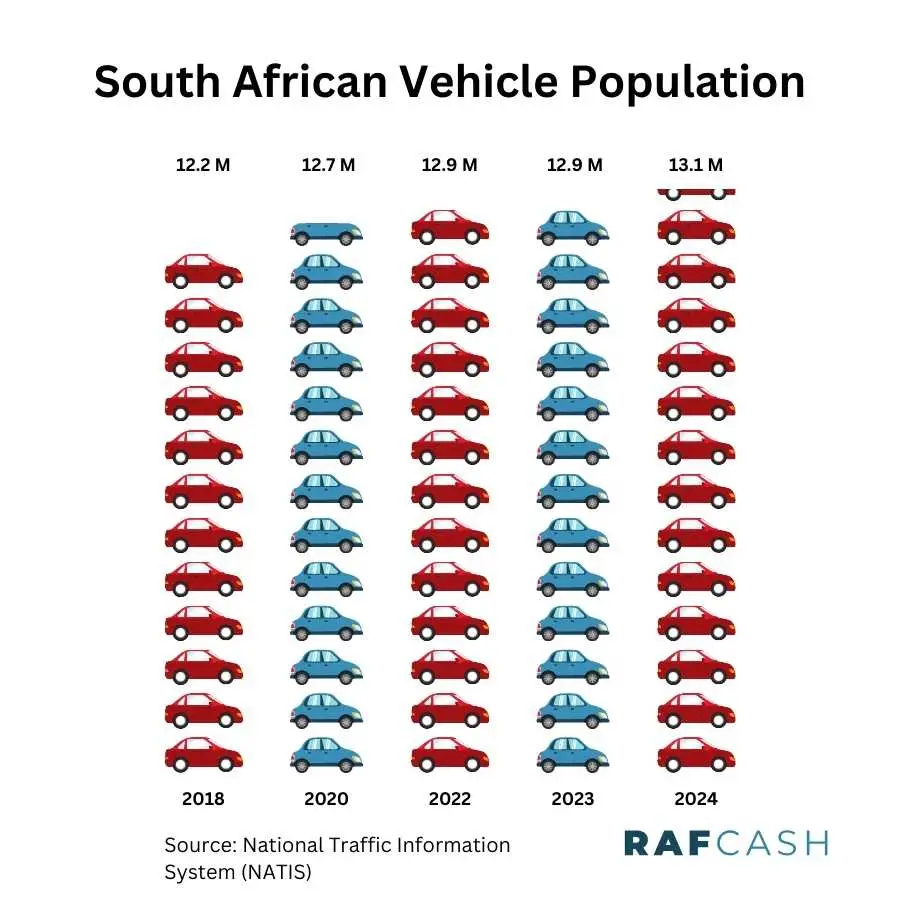
Interestingly, despite this surge in vehicle numbers, there’s a glimmer of hope.
Fatal crashes appears to be decreasing by 1.0% to 2.0% per annum, and is currently approximately 10,500 per annum.
This trend is heartening, suggesting that efforts to enhance road safety might be starting to bear fruit.
Regional and Road Type Analysis
Diving deeper, the statistics vary across regions and road types.
South Africa’s vast terrain, from urban highways to rural pathways, presents a complex puzzle of road safety challenges.
While the data analysis shows regional differences, it does appear that densely populated areas and major highways often bear the brunt of higher accident rates.
This pattern calls for tailored safety measures addressing the unique needs of each region and road type.

Understanding Trends Over Time
Looking at the broader picture, the trend over recent years indicates a nuanced story.
The gradual increase in vehicles on the road is juxtaposed with a slow but steady decrease in fatal accidents.
This trend suggests that while the risks associated with an expanding vehicle population are real, there are effective measures being taken to mitigate these risks.

In summary, the statistical overview of road accidents in South Africa paints a picture of a nation at a crossroads. With a growing number of vehicles and a slight decrease in fatal accidents, it’s clear that road safety is an evolving journey, not just a destination.
As we continue to navigate this journey, understanding these statistics is crucial in shaping a safer future on South Africa’s roads.
Causes of Accidents in South African Roads
The quest to understand and mitigate road accidents in South Africa leads us to explore their underlying causes.
It’s a complex interplay of factors, each weaving into the other, contributing to the tapestry of road safety challenges. Central to this are human factors, which, alarmingly, account for a staggering 85% of road fatalities.

Speed: A Perilous Factor
One of the most significant contributors to road accidents in South Africa is high-speed driving.
The allure of speed often overshadows the peril it brings, especially in certain road sections where high speeds turn lethal.
It reduces the driver’s reaction time and vehicle control, exponentially increasing the likelihood of accidents.
The criticality of managing speed to enhance road safety cannot be overstated.

The Scourge of Drunk Driving
Driving under the influence of alcohol is a grim reality on South African roads.
It impairs judgment, coordination, and reaction times, making it a major risk factor.
Despite stringent laws and awareness campaigns, drunk driving persists, underscoring the need for more effective enforcement and societal attitude changes.

Distracted Driving: A Modern Menace
In our hyper-connected world, distracted driving has emerged as a formidable challenge.
The use of mobile phones while driving epitomizes this trend, diverting attention from the road and significantly increasing the risk of accidents.
This modern-day hazard calls for heightened awareness and stricter regulations to curb its impact.

Human Factors: The Overarching Influence
Delving deeper into human factors, we find they are not just limited to reckless behavior like speeding or drunk driving.
Other aspects, such as inexperienced drivers, fatigue, and even emotional states, play a crucial role. These factors, often overlooked, contribute to a significant number of road mishaps.

In summary, the causes of road accidents in South Africa are multifaceted, with human factors at the forefront. Addressing these causes requires a holistic approach, combining stringent law enforcement, public education, and a cultural shift towards safer driving habits.
By tackling these root causes, South Africa can pave the way for a safer, more responsible road usage culture.
Pedestrian Fatalities: A Critical Concern in Road Safety
When discussing road accidents in South Africa, the plight of pedestrians cannot be overlooked.
They represent a particularly vulnerable group in the traffic ecosystem, often bearing a disproportionately high burden of road fatalities.

The Stark Reality of Pedestrian Vulnerability
Pedestrians, unlike vehicle occupants, have minimal protection in the event of a collision.
This vulnerability is starkly reflected in the statistics: a staggering 43% of road user fatalities in South Africa are pedestrians.
This high percentage is not just a number but a somber reminder of the lives lost and communities impacted.

Why Are Pedestrians So Vulnerable?
Several factors contribute to the high rate of pedestrian fatalities.
Firstly, many accidents occur in areas where pedestrian infrastructure is inadequate or nonexistent. This lack of safe crossing points, sidewalks, or barriers puts pedestrians at risk, especially in high-traffic areas.
Moreover, issues like intoxicated pedestrians, jaywalking, and the failure to use demarcated crossing spaces further exacerbate the risk.
These behaviors, often stemming from a lack of awareness or disregard for safety, significantly increase the likelihood of pedestrian-involved accidents.

Addressing the Challenge
To reduce pedestrian fatalities, a multifaceted approach is essential.
Infrastructure improvements are crucial, including the creation of more pedestrian-friendly zones, better lighting in walking areas, and the installation of more crosswalks and traffic calming measures.
Equally important is the role of education and awareness.
Campaigns targeting both drivers and pedestrians are vital in promoting safer behaviors, such as the importance of using crosswalks and being vigilant while crossing roads.
Enforcement of traffic laws is another critical element.
This includes cracking down on drunk driving, speeding in pedestrian-heavy areas, and ensuring that traffic laws protecting pedestrians are strictly enforced.

Moving Forward
Pedestrian safety is a critical and often overlooked aspect of road safety in South Africa.
Tackling the high rate of pedestrian fatalities requires a concerted effort from government authorities, community groups, and individuals.
By improving infrastructure, enhancing awareness, and enforcing laws, South Africa can create safer roads not just for drivers but for everyone who shares them.

Comparative Analysis: South Africa’s Road Safety in Global Perspective
To fully grasp the scope of South Africa’s road safety situation, it’s enlightening to compare it with other countries.
This global context not only offers a clearer understanding but also sheds light on where South Africa stands in terms of road safety measures and outcomes.
South Africa in the Global Road Safety Landscape
Globally, road accidents claim approximately 1.35 million lives each year, with nearly 3,700 people dying daily due to crashes.
When we zoom into these statistics, the variance between countries becomes apparent, often influenced by factors like road quality, traffic laws, enforcement rigor, and cultural attitudes towards driving.

The Fatality Rate: A Crucial Metric
A telling metric in road safety is the fatality rate per 100,000 inhabitants. South Africa’s rate, standing at 22.2 (based on most recent statistical data available), is alarmingly high, especially when compared to global averages.
This rate positions South Africa as one of the countries with a significant road safety challenge in the African continent and worldwide.
Africa’s Road Safety Crisis
The United Nations Economic Commission for Africa reports that Africa has the highest estimated road traffic fatality rate globally, at 26.6 deaths per 100,000 population.
Within this context, South Africa’s situation is reflective of a broader regional challenge, albeit with a slightly lower rate than the continental average.

Comparison with Other Countries
Comparing South Africa to countries with similar fatality rates provides further insights.
For instance, Iran and Malaysia, with fatality rates of 21.5 and 22.5 respectively, face similar challenges in road safety.
On the other hand, developed countries like those in Western Europe tend to have significantly lower rates, often single-digit figures, due to more stringent traffic laws, better road infrastructure, and higher public awareness.
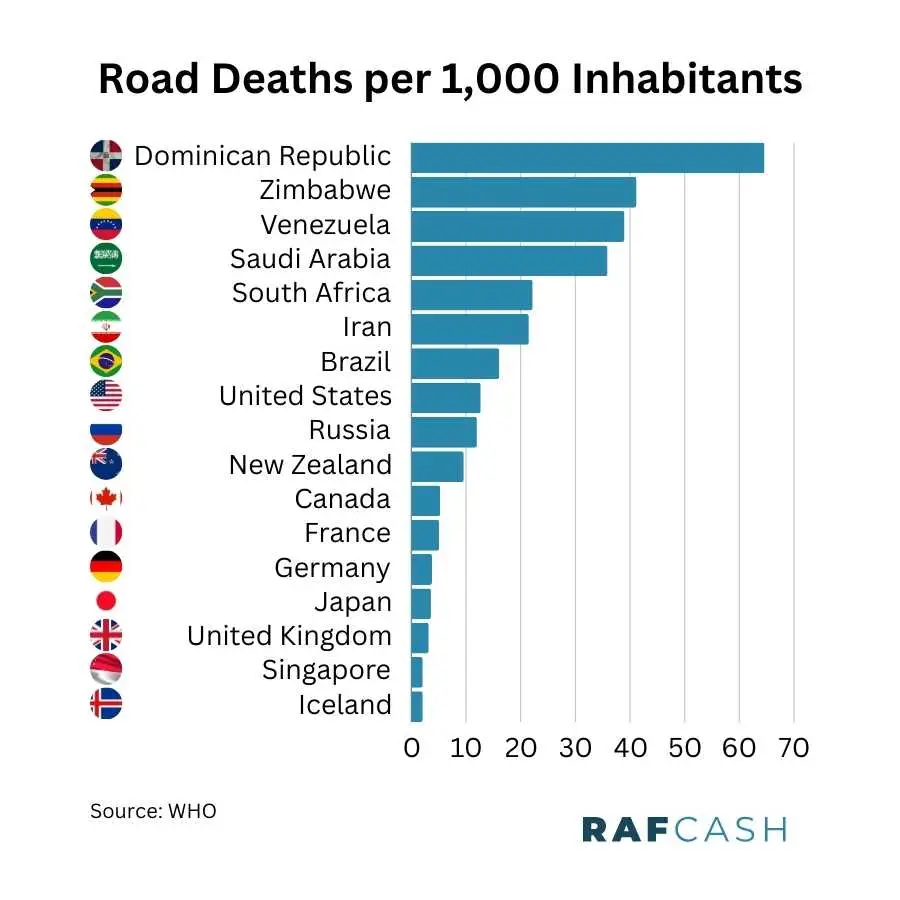
Lessons from the Comparison
This comparative analysis underscores the critical road safety challenges facing South Africa.
It’s evident that there’s a pressing need for concerted efforts in improving road safety standards.
Learning from countries with lower fatality rates, South Africa can implement more rigorous enforcement of traffic laws, enhance road infrastructure, and promote a culture of road safety among its populace.
In summary, while South Africa faces substantial road safety challenges, as reflected in its high fatality rate, there’s an opportunity to learn from global best practices.
By adopting and adapting successful strategies from countries with better road safety records, South Africa can make significant strides towards safer roads for all.
Demographic Data: The Diverse Impact of Road Accidents in South Africa
Road accidents in South Africa do not affect all demographics equally.
The impact varies significantly across different age groups, genders, and provincial populations, painting a complex picture of road safety and its societal implications.
Age Groups: Youth and Middle-Aged Most Affected
In dissecting the demographics, it’s evident that certain age groups are more susceptible to road fatalities.
Notably, the age group of 25 to 39 years accounts for a significant 41.4% of road fatalities.
This statistic is particularly concerning, as it represents the most economically active segment of the population.
On the other end of the spectrum, children between 0 to 14 years account for 10.2% of fatalities.
These figures highlight the urgent need for targeted road safety interventions focused on these vulnerable age groups.

Gender Disparity in Road Fatalities
Gender-wise, there is a pronounced disparity in road fatalities, with males accounting for approximately three-quarters of total road deaths.
This gender imbalance in road fatalities raises questions about driving behavior, risk exposure, and possibly occupational factors, as men are more likely to be engaged in driving-intensive jobs.
Provincial Variations: A Reflection of Population and Infrastructure
When we consider provincial data, the impact of road accidents varies widely across South Africa.
Gauteng, being the most populous province with around 16 million people, naturally reports a higher number of road incidents.
This is followed by KwaZulu-Natal with a population of 11.5 million.
Contrastingly, the Northern Cape, with the smallest population of only 1.3 million, records fewer accidents.
These variations are not just a matter of population density but also reflect differences in road infrastructure, urbanization, and enforcement of traffic laws across provinces.

The Plight of Pedestrians and Vulnerable Road Users
A crucial aspect of demographic impact is the vulnerability of certain groups, especially pedestrians, who account for a staggering 43% of road user fatalities.
This high percentage is particularly alarming and calls for urgent measures to enhance pedestrian safety, especially in high-traffic urban areas.
Moving Forward: A Demographic-Sensitive Approach to Road Safety
In summary, the demographic analysis of road accidents in South Africa reveals a nuanced and varied impact across different segments of the population.
Understanding these disparities is key to designing and implementing effective road safety strategies.
It calls for a demographic-sensitive approach that addresses the specific needs and risks of each group, from the youth and middle-aged to male drivers and pedestrians, across the diverse provinces of South Africa.
By doing so, South Africa can move towards a more inclusive and effective road safety framework that protects all its citizens.

Geographical Variations in Road Accidents Across South Africa
South Africa’s road accident rates are not uniformly distributed across its geography.
The interplay between urban and rural settings, specific highways, and the unique structure and culture of the country contribute to significant regional variations in road safety.
Urban vs. Rural: A Tale of Two Settings
In urban areas, the density of vehicles, combined with a mix of pedestrians, cyclists, and public transport, creates a complex traffic environment.
Cities like Johannesburg and Cape Town, with their bustling streets and heavy traffic, tend to report higher accident rates. These accidents are often characterized by high-speed collisions, pedestrian accidents, and incidents involving public transport.

Conversely, rural areas present a different set of challenges.
The vast stretches of road, often with less stringent traffic enforcement and lower levels of road maintenance, contribute to accidents.
These are typically high-speed crashes, rollovers, and collisions with animals.
Rural roads, lacking adequate lighting and signage, further exacerbate the risk, especially at night.
The Role of Major Highways
Certain highways in South Africa are notorious for their high accident rates.
Roads like the N1, N2, and N3, which are major transport arteries, witness a significant number of accidents due to factors like high traffic volumes, long-distance travel fatigue, and in some cases, poor road conditions.
These highways connect major cities and often traverse diverse terrains, influencing the nature and frequency of accidents.
Understanding South Africa’s Structure and Culture
To comprehend these geographical variations, one must consider South Africa’s unique structure and culture.
The country’s history of spatial segregation has led to a sprawling urban structure with long commutes, especially for workers traveling from townships to city centers. This increases exposure to road accidents.
The cultural aspect also plays a role. In many communities, there is a reliance on walking and public transportation, making pedestrians and commuters highly vulnerable.
Moreover, attitudes towards driving and road usage vary widely, with some regions showing higher instances of risky behaviors like speeding and drunk driving.

The Impact of Socioeconomic Factors
Socioeconomic factors also influence road safety.
In economically disadvantaged areas, where vehicle maintenance and road infrastructure are poor, accident rates are higher.
These areas often lack the resources for effective traffic law enforcement, further contributing to the risk.
A Regionally-Tailored Approach to Road Safety
South Africa’s diverse urban and rural landscapes, combined with its unique structural and cultural context, result in varied road safety challenges across the country.
Addressing these requires a regionally-tailored approach that considers the specific needs and characteristics of each area.
By understanding and addressing these geographical variations, South Africa can develop more effective, localized strategies to improve road safety for all its citizens.
Road Network and Vehicle Population in South Africa: Challenges and Implications for Road Safety
South Africa’s road network and the burgeoning vehicle population play a pivotal role in shaping the country’s road safety landscape.
Understanding these elements is crucial in addressing the challenges and enhancing safety measures.
Overview of South Africa’s Road Network
The South African road network, one of the most extensive in the continent, spans approximately 750,000 kilometers.
It ranks as the tenth largest globally, underscoring the country’s significant infrastructure in transportation.
This network comprises a mix of highways, national roads, and rural tracks, each presenting unique challenges.

Highways and National Roads
The highways and national roads, like the N1, N2, and N3, are the main arteries of the network, connecting major cities and facilitating substantial economic activities.
While they are generally well-maintained and equipped with better safety features, these roads witness high volumes of traffic, including heavy vehicles, leading to increased risks of high-speed accidents and congestion-related issues.
Rural Roads
Rural roads, on the other hand, present a different set of challenges.
Often less maintained, these roads may lack essential safety features such as adequate signage, lighting, and road markings.
The conditions of these roads, coupled with factors like inadequate driver training and poor vehicle maintenance, heighten the risk of accidents in rural areas.

Vehicle Population: A Growing Concern
As of the end of 2022, South Africa’s vehicle population has seen a steady increase, with a notable jump to approximately 12.964 million vehicles.
This growth reflects the country’s developing economy but also brings to light significant road safety challenges.
Urban Centers and Vehicle Density
Urban centers like Johannesburg, Cape Town, and Durban, with their higher vehicle densities, face issues like traffic congestion, increased vehicular interactions, and resultant accidents.
The high number of vehicles in a confined space elevates the chances of collisions, particularly during peak hours.

Implications for Road Safety
The expanding vehicle population, juxtaposed with a vast and varied road network, places immense pressure on South Africa’s road safety measures.
It necessitates not only robust infrastructure development but also dynamic traffic management strategies to cope with the increasing demands.
Challenges Ahead
The challenges are multifaceted – from managing traffic flow on busy urban roads to ensuring safety on isolated rural routes.
Additionally, the diversity in vehicle types, ranging from personal cars to heavy trucks, adds another layer of complexity in formulating comprehensive road safety strategies.

Towards a Safer Future
In summary, South Africa’s extensive road network and growing vehicle population present significant challenges to road safety.
Addressing these requires a holistic approach that encompasses infrastructure improvement, traffic management, driver education, and stringent enforcement of traffic laws.
By tackling these challenges head-on, South Africa can pave the way towards a safer and more efficient road transport system.
Global Statistics: The Far-reaching Impact of Road Traffic Injuries and Deaths
The issue of road safety transcends national boundaries, affecting populations worldwide.
A look at global statistics reveals the extensive impact of road traffic injuries and deaths, particularly on vulnerable road users and the broader economic implications.
The Global Scale of Road Traffic Incidents
According to the World Health Organization, road traffic injuries are a major public health problem globally, causing approximately 1.3 million deaths each year.
This equates to an average of 3,700 people losing their lives daily on the world’s roads. Beyond fatalities, tens of millions more are injured or disabled, often with lasting impacts on their lives and livelihoods.
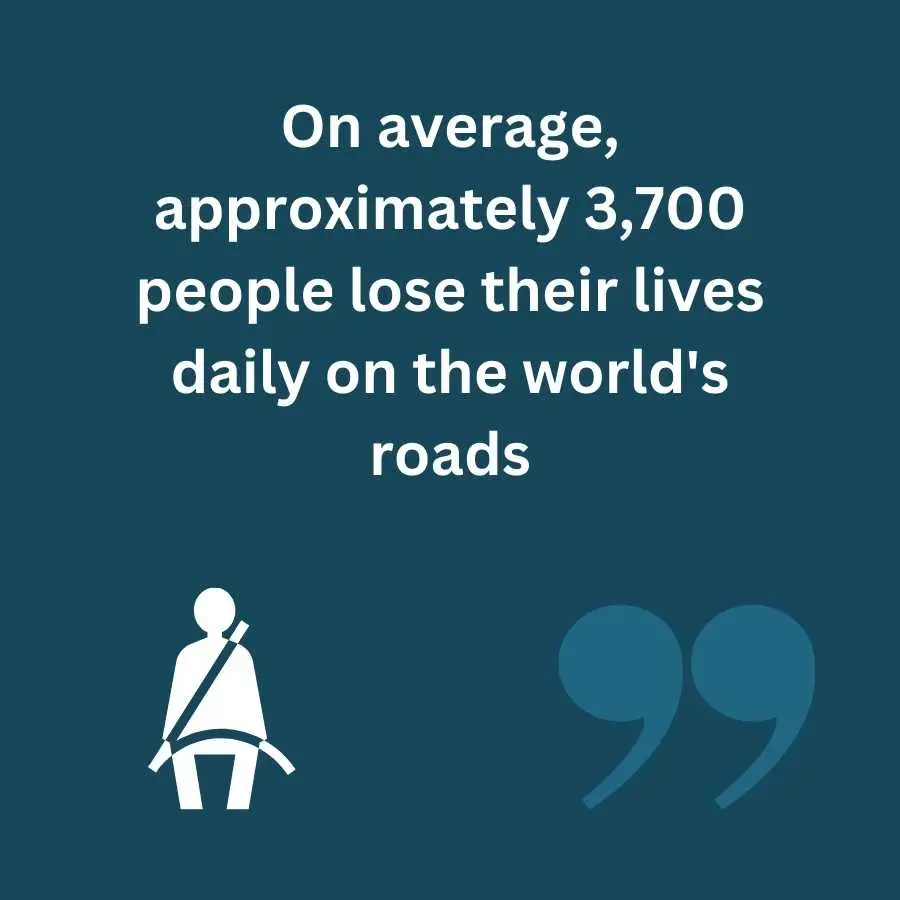
Vulnerable Road Users: A Primary Concern
A critical aspect of these statistics is the disproportionate impact on vulnerable road users – pedestrians, cyclists, and motorcyclists.
These groups account for more than half of all road traffic deaths.
In many parts of the world, particularly in low- and middle-income countries, these individuals are at a higher risk due to inadequate infrastructure, such as lack of sidewalks, bike lanes, and safe crossing points.

Economic Costs: A Burden on Societies
The economic repercussions of road traffic injuries and deaths are substantial.
These incidents cost most countries 3% of their gross domestic product.
These costs encompass a wide range of factors, including medical expenses, lost productivity, and the burden on health care and legal systems.
For many countries, especially those with limited resources, the economic strain is immense, hindering broader development and poverty reduction efforts.
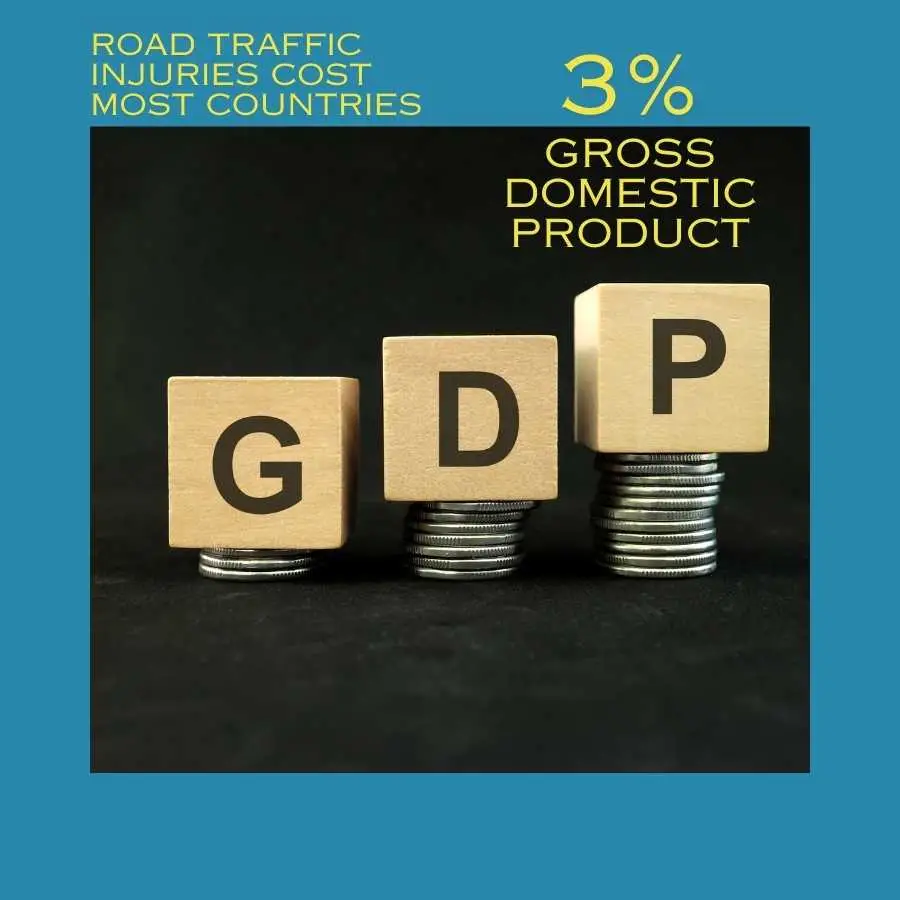
Distribution of Road Traffic Deaths
The distribution of road traffic deaths is uneven globally. While low- and middle-income countries have approximately 60% of the world’s vehicles, they suffer from 93% of the fatalities.
This disparity highlights the challenges in these regions, such as lower levels of road safety regulation, vehicle safety standards, and post-crash response.
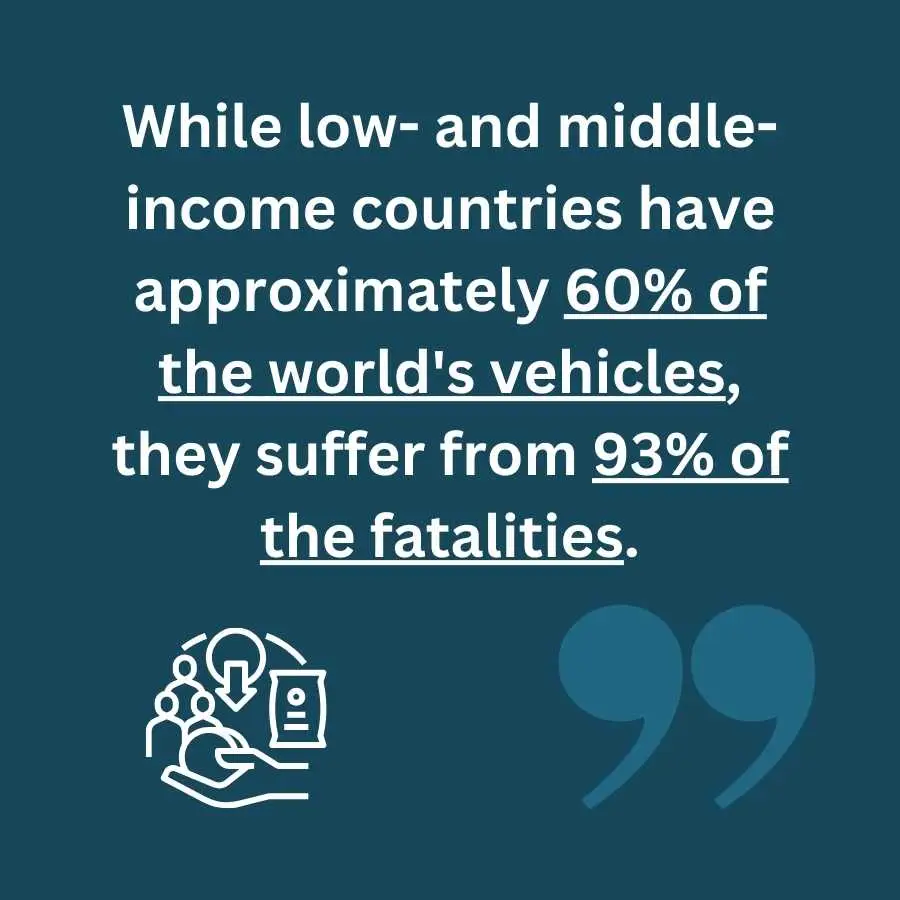
A Call for Global Action
These statistics not only shed light on the scale of the problem but also underscore the need for concerted global action.
Improving road safety is a complex task that requires collaboration across sectors and nations.
By addressing the needs of vulnerable road users, enhancing infrastructure, enforcing traffic laws, and investing in safer vehicles, the global community can make significant strides in reducing the toll of road traffic injuries and deaths, thereby saving lives and reducing economic costs.
Government Policies and Road Safety Initiatives in South Africa
The South African government, recognizing the grave impact of road accidents, has implemented a range of policies and initiatives aimed at enhancing road safety.
These efforts are multi-faceted, targeting various aspects of road use, from enforcement to education and infrastructure improvement.
National Road Safety Strategy
A cornerstone of South Africa’s approach to road safety is the National Road Safety Strategy (NRSS).
This comprehensive plan outlines the government’s long-term vision for reducing road fatalities and injuries.
It focuses on key areas such as improving driver behavior, enhancing pedestrian safety, and upgrading road infrastructure.

The Role of the Road Traffic Management Corporation (RTMC)
The RTMC plays a pivotal role in coordinating road traffic management across national, provincial, and local levels.
Its responsibilities include overseeing law enforcement, conducting road safety campaigns, and gathering and analyzing road accident data to inform policy decisions.
Enforcement Campaigns
One of the most visible aspects of South Africa’s road safety initiatives are the enforcement campaigns.
These include stringent measures against driving under the influence of alcohol, speeding, and other traffic violations.
Regular roadblocks and patrols, especially during peak travel times like holidays, are part of these efforts.
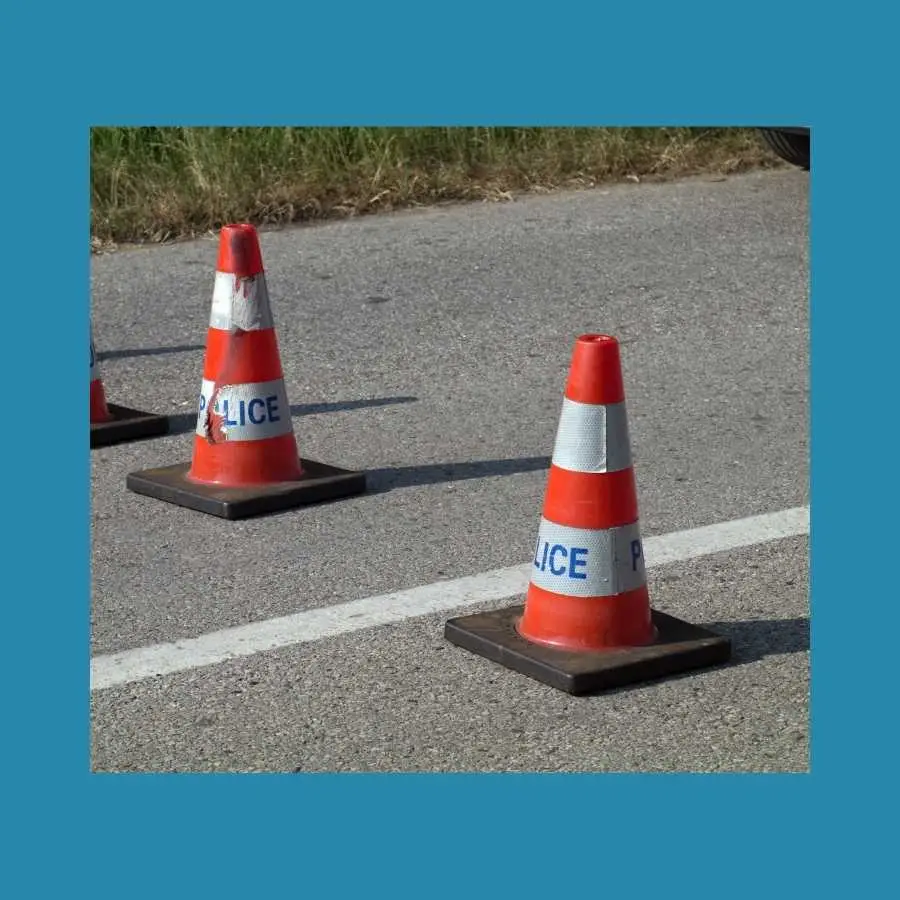
Educational Programs and Awareness Campaigns
The South African government also invests in educational programs and awareness campaigns.
These initiatives target drivers, pedestrians, and school children, emphasizing the importance of road safety measures such as seatbelt use, pedestrian awareness, and the dangers of distracted driving.
Infrastructure Improvements
Recognizing the role of infrastructure in road safety, the government has undertaken projects to improve road conditions.
This includes upgrading high-risk roads, improving signage and lighting, and creating safer pedestrian and cyclist pathways.
Collaboration with Private Sector and Non-Profits
A key element of South Africa’s road safety strategy is collaboration with the private sector and non-profit organizations.
These partnerships help in amplifying the reach of awareness campaigns and in implementing community-based road safety initiatives.
Challenges and Future Directions
Despite these efforts, challenges remain, such as ensuring consistent enforcement across regions and securing adequate funding for road safety programs.
The South African government continues to refine its strategies, incorporating new technologies and data-driven approaches to enhance road safety.
A Commitment to Road Safety
The South African government’s policies and initiatives demonstrate a strong commitment to improving road safety.
While significant challenges persist, ongoing efforts and a multifaceted approach show promise in reducing the incidence and severity of road accidents in the country.
Continued dedication to these initiatives is crucial for creating safer roads for all South Africans.

Economic Impact of Road Accidents in South Africa
The repercussions of road accidents in South Africa extend far beyond the immediate human toll.
These incidents have a profound economic impact, affecting individuals, families, businesses, and the national economy at large.
The Direct and Indirect Costs
- Medical Costs: One of the most immediate economic impacts of road accidents is the cost of medical care. This includes emergency services, hospital stays, long-term rehabilitation, and other health care needs. For many victims and their families, these costs can be financially crippling, especially in cases of severe or long-term injuries.
- Loss of Productivity: Road accidents often result in significant time off work for those injured, and in the worst cases, can lead to permanent disability or death. This loss of productivity has a ripple effect on the economy, affecting employers and reducing the overall labor force. For families of victims, this can mean a loss of income and financial instability.
- Damage to Vehicles and Infrastructure: The damage to vehicles and infrastructure represents a substantial cost. Repairing or replacing vehicles and restoring damaged roads, bridges, and other infrastructures requires significant investment. These costs are often borne by government entities, insurance companies, and individual vehicle owners.
Broader Economic Implications
The broader economic implications of road accidents are staggering.
A study estimated the cost of crashes in South Africa at around R200 billion, which is about 3.29% of the country’s GDP.
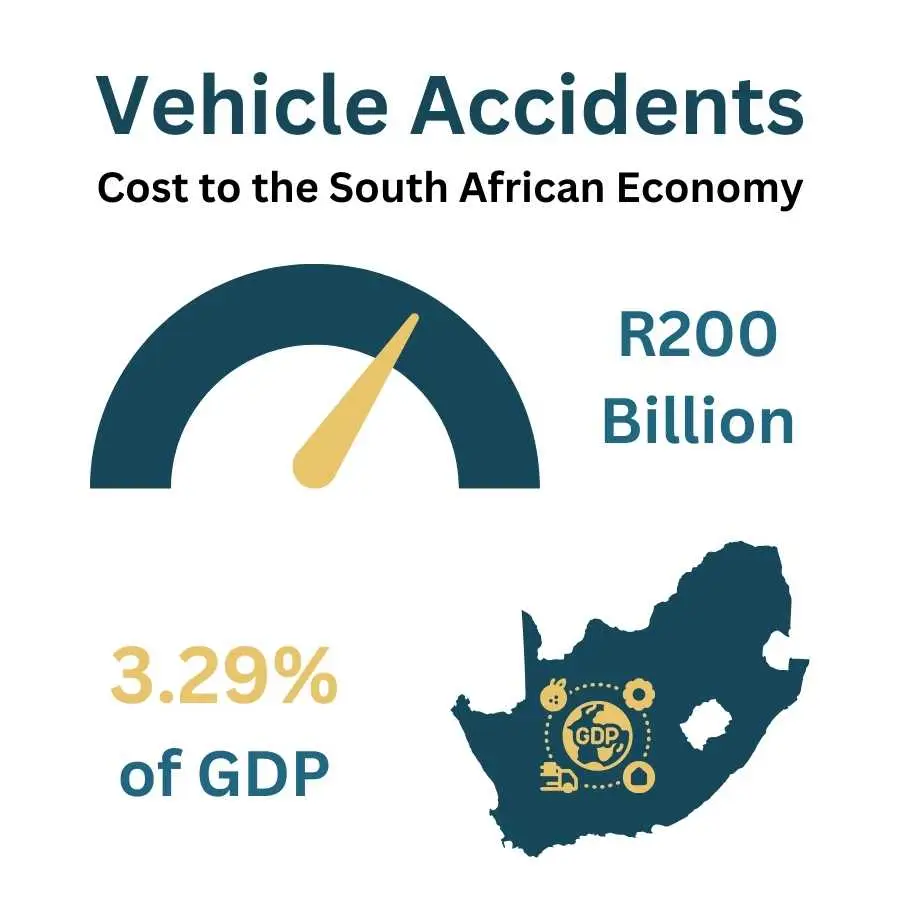
These figures encompass not just direct costs like medical expenses and property damage, but also indirect costs such as lost productivity and human suffering.
The Burden on the Healthcare System
The healthcare system in South Africa faces significant strain due to road accidents. Emergency services, hospitals, and rehabilitation centers must allocate substantial resources to deal with the aftermath of these incidents.
This not only puts a financial strain on the healthcare system but also impacts the quality and availability of healthcare services for other patients.
Insurance and Legal Costs
Insurance plays a crucial role in mitigating the economic impact of road accidents.
However, high accident rates lead to higher insurance premiums for all drivers.
Additionally, there are considerable legal costs associated with road accidents, from litigation and settlements to the administration of claims.

A Call for Action
The economic impact of road accidents in South Africa underscores the need for more effective road safety measures.
By reducing the frequency and severity of accidents, not only can lives be saved, but also a significant economic burden can be alleviated. Investing in road safety is not just a moral imperative but an economic necessity for the well-being and prosperity of South Africa.
Personal Stories and Case Studies: The Human Face of Road Accidents in South Africa
Behind every statistic of road accidents in South Africa is a human story, a personal journey of loss, resilience, or change. These personal narratives offer a poignant insight into the real-life impact of road safety issues.
The Story of Nomsa: A Survivor’s Tale
Nomsa, a 28-year-old mother from Johannesburg, vividly remembers the day her life changed. While crossing the street at a busy intersection, she was hit by a speeding car. The driver, distracted by a phone call, didn’t see her in time. Nomsa sustained multiple injuries and spent weeks in the hospital. The physical recovery was just one part of her journey; the emotional trauma lingered much longer. Her story highlights the devastating impact of distracted driving and the importance of pedestrian safety.

"Every time I hear a car's horn or the screech of brakes, it takes me back to that moment. But I refuse to be defined by it. Instead, I choose to speak out about the dangers of distracted driving and the need for greater awareness for pedestrian safety. My scars are a reminder not just of what I survived, but of the message I carry."
Sipho’s Loss: A Family Forever Changed
For Sipho, a 35-year-old from Cape Town, the tragedy struck on a sunny afternoon when his younger brother was involved in a motorcycle accident. A moment’s lapse in judgment by a drunk driver led to a crash that claimed his brother’s life. This incident not only left Sipho grieving but also brought to the fore the devastating consequences of drunk driving. It spurred him to become an advocate for stricter laws and greater awareness about the dangers of alcohol impairment behind the wheel.

"Every laugh we shared, every memory we made, was taken away in an instant. It's not just one life lost; it's a whole family left with an unfillable void. I tell my brother's story not to dwell on our loss, but to prevent others from experiencing this pain. Drunk driving is not just a mistake – it's a choice, and it's time we intensify our fight against it to save lives."
Case Study: The Aftermath of a Rural Road Accident
In a rural area of KwaZulu-Natal, a community was shaken when a local school bus, navigating poorly maintained roads, overturned. Several children were injured, and the community was left grappling with questions about road safety and infrastructure. This case study sheds light on the challenges faced in rural areas regarding road maintenance and the safety of public transport, especially for school children.

"This tragedy is a wake-up call for all of us. Our children's safety should be a priority, and it begins with the roads they travel every day. How many more accidents do we need before real action is taken? We must demand better road maintenance and safer transport for our kids. It's not just about getting from one place to another; it's about ensuring they arrive safely."
The Courage of Thembi: Overcoming Disability
Thembi’s story is one of resilience. Involved in a serious car accident caused by a fatigued truck driver, she lost a limb and had to navigate life as an amputee. Her journey of rehabilitation and adaptation is a testament to human strength. Thembi now works with organizations that advocate for road safety and support for accident victims, turning her personal tragedy into a force for positive change.

"Living as an amputee is not just about physical adjustment; it's a complete transformation of how you see yourself and the world. My accident could have been the end, but I chose to make it a new beginning. Now, I use my experience to advocate for safer roads and support others in their journey of healing and adaptation. We're not defined by our disabilities but by how we overcome them."
More Than Just Numbers
These stories and case studies represent just a few of the many faces behind the road accident statistics in South Africa. They serve as powerful reminders of the consequences of road safety lapses and the urgent need for continued efforts to make South African roads safer. Each story is a call to action, urging everyone from policymakers to everyday drivers to play their part in preventing such tragedies.
Technological and Automotive Advances: Shaping the Future of Road Safety
The landscape of road safety is rapidly evolving, driven by technological and automotive advancements. These innovations have the potential to significantly reduce the rate of accidents, enhancing safety for all road users in South Africa and beyond.
Vehicle Safety Technology: A Game-Changer
- Automated Emergency Braking Systems (AEBS): AEBS technology, which automatically applies brakes to prevent or mitigate collisions, has become increasingly common in modern vehicles. This system can significantly reduce rear-end collisions, one of the most frequent types of road accidents.
- Advanced Driver Assistance Systems (ADAS): ADAS includes a range of technologies like lane departure warnings, blind-spot detection, and adaptive cruise control. These systems aid drivers in maintaining safe driving practices, reducing the likelihood of human error leading to accidents.
- Connected Vehicles and Telematics: The integration of telematics and IoT in vehicles allows for real-time data sharing, enabling vehicles to communicate with each other and with road infrastructure. This connectivity can alert drivers to potential hazards, traffic conditions, and even optimize route planning to avoid congested or risky areas.
Road Design and Infrastructure Improvements
- Smart Roads: Incorporating sensors and smart technologies into road infrastructure can significantly enhance safety. This includes intelligent traffic signals that adapt to traffic flow, road surfaces that can change color to warn of hazardous conditions, and dynamic signage that responds to real-time events.
- Better Lighting and Signage: Improved lighting in accident-prone areas and clearer, more visible signage can play a crucial role in preventing accidents, especially at night or in adverse weather conditions.
- Pedestrian and Cyclist-Friendly Design: Creating roads with better pedestrian and cyclist infrastructure, such as dedicated lanes and crossings, can greatly reduce accidents involving these vulnerable road users.

The Role of Autonomous Vehicles
The potential introduction of fully autonomous vehicles could revolutionize road safety. These vehicles, guided by advanced AI and machine learning algorithms, could significantly reduce accidents caused by human error. However, the transition to autonomous driving will require addressing numerous technical, regulatory, and ethical challenges.
Challenges and Considerations
While these technological advances are promising, there are challenges to consider. The cost of implementing and maintaining advanced technologies can be high, and there’s a need for widespread adoption to see significant impact. Additionally, the transition to newer technologies must be managed carefully to ensure that all road users, especially in economically disadvantaged areas, benefit from these improvements.
A Safer Road Ahead
Technological and automotive advances offer exciting possibilities for making roads safer. As these technologies continue to develop and become more integrated into vehicles and road infrastructure, we can anticipate a future where road accidents become increasingly rare, paving the way for a safer, more secure driving environment for everyone.
Public Opinion and Cultural Attitudes Towards Road Safety in South Africa
Public opinion and cultural attitudes play a pivotal role in shaping road safety and driving behaviors in South Africa. Understanding these societal perspectives is crucial for implementing effective road safety strategies.
General Attitudes Towards Road Safety
In South Africa, there is a growing awareness of road safety issues, largely driven by the high number of road accidents and fatalities reported in the media. However, this awareness often contrasts with on-the-ground behaviors. Speeding, aggressive driving, and non-compliance with traffic laws are still prevalent, indicating a gap between awareness and action.
Cultural Factors Influencing Driving Behaviors
Cultural attitudes deeply influence driving behaviors. In some communities, there is a perceived bravado associated with risky driving, such as speeding or overtaking dangerously. This attitude is often exacerbated by peer pressure, especially among younger drivers.
Additionally, there is a cultural tendency in some areas to view traffic laws as guidelines rather than strict rules to be followed. This relaxed attitude towards compliance contributes to behaviors like running red lights, driving without seatbelts, or using mobile phones while driving.

Public Opinion on Traffic Laws and Enforcement
There is a mixed public opinion regarding traffic law enforcement in South Africa. While many citizens acknowledge the necessity of strict enforcement to maintain road safety, others perceive traffic fines and penalties as overly punitive or inconsistently applied. This perception can sometimes lead to resentment towards law enforcement agencies and a lack of cooperation from the public.
The Role of Education and Awareness Campaigns
Education and awareness campaigns have been instrumental in shifting public opinion towards more positive road safety attitudes. These campaigns, often run by the government and NGOs, highlight the consequences of unsafe driving and the benefits of compliance with traffic laws. However, the challenge lies in translating this increased awareness into actual behavioral change.
Cultural Shifts and Future Trends
Encouragingly, there is a gradual cultural shift towards safer driving practices, particularly among younger generations who are more exposed to road safety education. The increasing use of social media and technology also offers new avenues for spreading awareness and influencing public opinion positively.
The Road to Change
While there are significant challenges in aligning public opinion and cultural attitudes with road safety objectives, ongoing efforts in education, enforcement, and public engagement hold promise. A sustained focus on changing cultural norms and attitudes, coupled with effective law enforcement and community involvement, is key to making South African roads safer for everyone.
Expert Perspectives on Road Safety in South Africa
Gaining insights from various experts in the field of traffic safety, government policy, and non-profit road safety initiatives offers a comprehensive understanding of the road safety landscape in South Africa. These perspectives help to shape a clearer picture of both the challenges and solutions in enhancing road safety.
Insights from a Traffic Safety Expert
Focus Areas:
- Data-Driven Approaches: The expert underscored the importance of using accurate data to inform road safety policies. Understanding patterns in road accidents can lead to more targeted and effective safety measures.
- Technological Advancements: Emphasis was placed on the potential of technology in traffic management and accident prevention, such as AI and predictive analytics.
- Educating Drivers: The need for comprehensive driver education programs was highlighted, noting that a significant number of accidents are due to a lack of knowledge or disregard for road safety rules.
Views from a Government Official in the Transport Sector
Key Insights:
- Government Initiatives: The official outlined various national strategies and programs aimed at reducing road fatalities and improving road safety.
- Enforcement Challenges: They acknowledged the difficulties in enforcing traffic laws consistently across the country, especially in rural or less accessible areas.
- Public Participation: The role of public awareness and participation in road safety was emphasized as crucial for the success of any policy or program.
Perspective from a Non-Profit Sector Representative
Main Points:
- Community Engagement: The importance of involving communities in road safety initiatives, especially in educating young and vulnerable road users, was discussed.
- Focus on Vulnerable Groups: Special attention was given to the safety of pedestrians and cyclists, advocating for improved infrastructure and targeted safety campaigns.
- Collaborative Efforts: The representative stressed the need for collaborative efforts between various sectors, including government, non-profits, and the private sector, to enhance the impact of road safety measures.

A Multifaceted Approach
These expert opinions highlight that addressing road safety in South Africa is a multifaceted challenge requiring coordinated efforts across different domains. Data-driven policy making, technological innovation, education, consistent enforcement, and active public engagement are all key components in creating safer roads. It’s evident that a collaborative approach, involving various stakeholders, is essential in making substantial progress in road safety.
Towards a Safer Future on South African Roads
This comprehensive exploration of road safety in South Africa has illuminated the multifaceted nature of the issue, revealing both the challenges and the opportunities for improvement. From statistical analyses to expert insights, the journey through the various dimensions of road safety underscores the urgent need for action and the potential for positive change.
Key Points Summary
- Statistical Overview: Despite a growing vehicle population, there has been a slight decrease in fatal crashes and fatalities, indicating progress but also highlighting the need for continued vigilance.
- Causes of Accidents: Human factors, including speeding, drunk driving, and distracted driving, remain significant contributors to road fatalities, emphasizing the need for behavioral change and stricter enforcement.
- Pedestrian Fatalities: The high percentage of pedestrian fatalities calls for dedicated efforts to improve pedestrian infrastructure and safety.
- Comparative Analysis: Comparing South Africa’s road safety record with other countries reveals a relatively high fatality rate, underscoring the necessity for targeted interventions.
- Demographic Data: The varying impact of road accidents across different demographics suggests the need for tailored road safety strategies.
- Geographical Variations: Urban and rural areas present distinct challenges, requiring region-specific solutions to enhance road safety.
- Global Statistics: The global context of road safety highlights the broader impact of road accidents on economies and health systems.
- Government Policies and Initiatives: South Africa’s multifaceted approach, including the National Road Safety Strategy, enforcement campaigns, and infrastructure improvements, is a step in the right direction.
- Economic Impact: The substantial economic cost of road accidents emphasizes the need for effective road safety measures as an economic imperative.
- Technological and Automotive Advances: Emerging technologies in vehicle safety and road design offer promising avenues for reducing accident rates.

The Road Ahead: Areas for Further Research and Action
- Behavioral Studies: Further research into the behavioral aspects of driving could provide deeper insights into effective strategies for changing driver attitudes and habits.
- Technological Integration: Exploring the integration of advanced technologies in both vehicles and road infrastructure can offer innovative solutions to enhance road safety.
- Policy Effectiveness: Ongoing evaluation of current road safety policies and programs is crucial to understand their effectiveness and areas for improvement.
- Community Engagement: Greater focus on community engagement and education, especially in schools and high-risk areas, can foster a culture of road safety from a young age.
Final Thoughts
Addressing road safety in South Africa is not just a matter of policy and enforcement; it’s about cultivating a culture of safety and responsibility.
It requires a collective effort from government, private sector, non-profits, communities, and individuals.
As we look to the future, the goal is clear: to create a safer, more secure road environment for all South Africans, reducing the toll of road accidents on lives, families, and the economy.
Through continued research, innovation, and collaborative action, this goal can be achieved, steering South Africa towards a safer and more prosperous future.

In conclusion, while strides are being made in enhancing road safety in South Africa, much remains to be done.
The journey to safer roads is ongoing and requires the collective effort of every individual.
Stay informed and become a part of the solution. Educate yourself about the Road Accident Fund ecosystem and the broader context of road safety.
Subscribe to our newsletter and join a community committed to making South Africa’s roads safer for everyone.
Frequently Asked Questions
Why are road accidents so common in South Africa?
Road accidents in South Africa are often due to high speeds, driving under the influence, distracted driving, and inadequate road infrastructure.
What age group is most affected by road accidents in South Africa?
Individuals aged 25 to 39 years are most affected by road accidents, representing a significant portion of fatalities.
Are pedestrian fatalities high in South Africa, and why?
Yes, pedestrian fatalities are high, accounting for 43% of road user deaths, often due to poor infrastructure and risky behaviors like jaywalking.
How does the vehicle population impact road safety in South Africa?
An increasing vehicle population leads to more congested roads, heightening the potential for accidents, especially in urban areas.
What technological advances are improving road safety?
Technologies like Automated Emergency Braking Systems, Advanced Driver Assistance Systems, and smart road infrastructures are enhancing road safety.
How does road safety vary between urban and rural areas in South Africa?
Urban areas face issues like congestion and pedestrian accidents, while rural areas deal with high-speed crashes and less stringent law enforcement.
What role do cultural attitudes play in road safety in South Africa?
Cultural attitudes, including perceptions of traffic laws and driving behaviors, significantly influence road safety, often leading to risky driving practices.
How are the economic costs of road accidents impacting South Africa?
Road accidents cost South Africa billions, affecting healthcare, loss of productivity, and infrastructure repair, straining both individual finances and the national economy.
What are the major challenges in enforcing road safety laws?
Challenges include inconsistent law enforcement across regions, especially in rural areas, and public attitudes towards compliance with traffic laws.
How can the public contribute to improving road safety?
The public can contribute by adhering to traffic laws, staying informed about road safety, and participating in community awareness and education programs.
Glossary
- Traffic Accidents: Collisions or incidents that occur on the road involving vehicles, pedestrians, or property.
- Vehicle Safety: Measures and technologies in vehicles designed to prevent accidents and protect occupants.
- Pedestrian Safety: Safety measures and practices to protect people walking on or near roads.
- Traffic Laws: Regulations governing the behavior of drivers and other road users.
- Urban Road Safety: Road safety concerns and measures in city and metropolitan areas.
- Rural Road Safety: Safety issues and precautions on roads in less populated and agricultural areas.
- Highway Safety: Measures and strategies to prevent accidents on major roads and expressways.
- Road Infrastructure: Physical components of the road system, including roads, bridges, and signs.
- Traffic Enforcement: The practice of ensuring road users adhere to traffic laws.
- Distracted Driving: Driving while engaging in other activities that divert attention from driving.
- Speeding: Driving at a speed above the legal limit or too fast for road conditions.
- Autonomous Vehicles: Vehicles equipped with technology to drive themselves without human input.
- Driver Assistance Systems: Technology in vehicles designed to assist the driver in driving and parking functions.
- Emergency Braking: A safety feature that enables a vehicle to automatically apply brakes in a critical situation.
- Traffic Fatality Rates: The number of deaths due to road accidents per a certain number of inhabitants or vehicles.

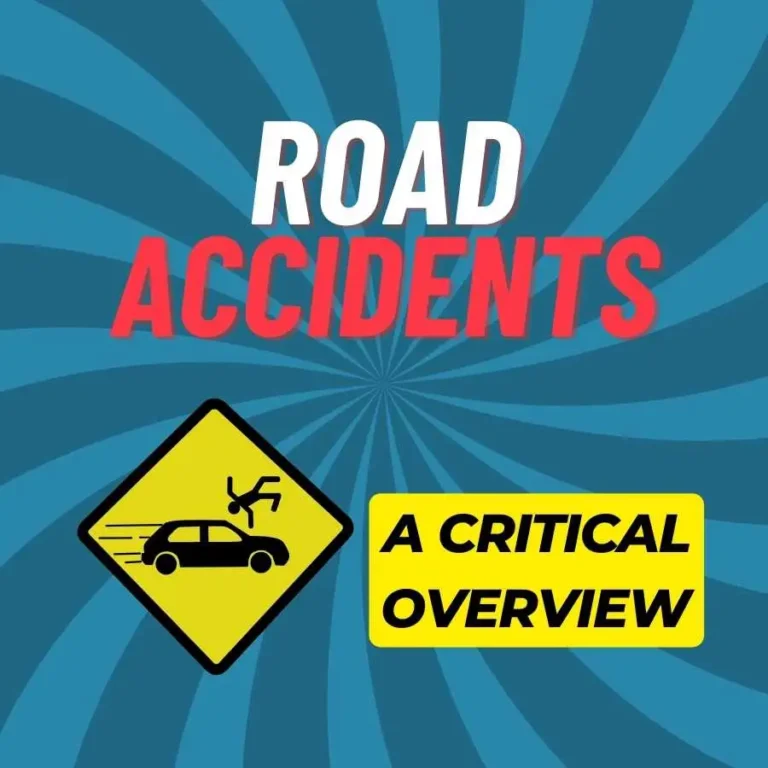

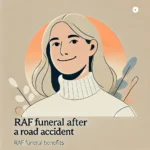
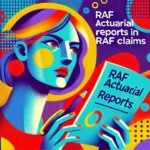

2 Responses
Dear the road accident fund.i am Mr Bafana Lawrence Themba.from Gauteng province Tsakane address 3888 Shabalala street posts code 1550.in the year 1996 I was hert by a car well I was crossing for way road called Malandela road.a car hert me on the left side of my body my liky my spanirycort of my painful from 1996 tell today 2024 I am filing pain on my body.and the owner of a car was jamza the multimillion Business Man Who was staying at tsakane Ext 1.Sumtimes my heard lose forcars work like a machine store in formation my heard.so my laky.spanirycort and my heard always painful.plaesing the road accident fund to Deposit me on this account Standard Bank my account number it’s 10178346711 account type puresave.branch Springs code 051001.swift address SBZAZAJJ.Whet a Special thanks 😊👍.
Hi Bafana, thank you for reaching out. This sounds more complicated than what I can answer on this thread.
However, below are a few broad-stroke considerations:
1. We are not the Road Accident Fund
2. If you have not previously claimed since 1996 your file may have prescribed.
3. Your best next step will be to make contact with the RAF directly. You can try their welcome centers or call-centers.
If you require more personalized and specific advice the consider https://rafcash.co.za/claimassist